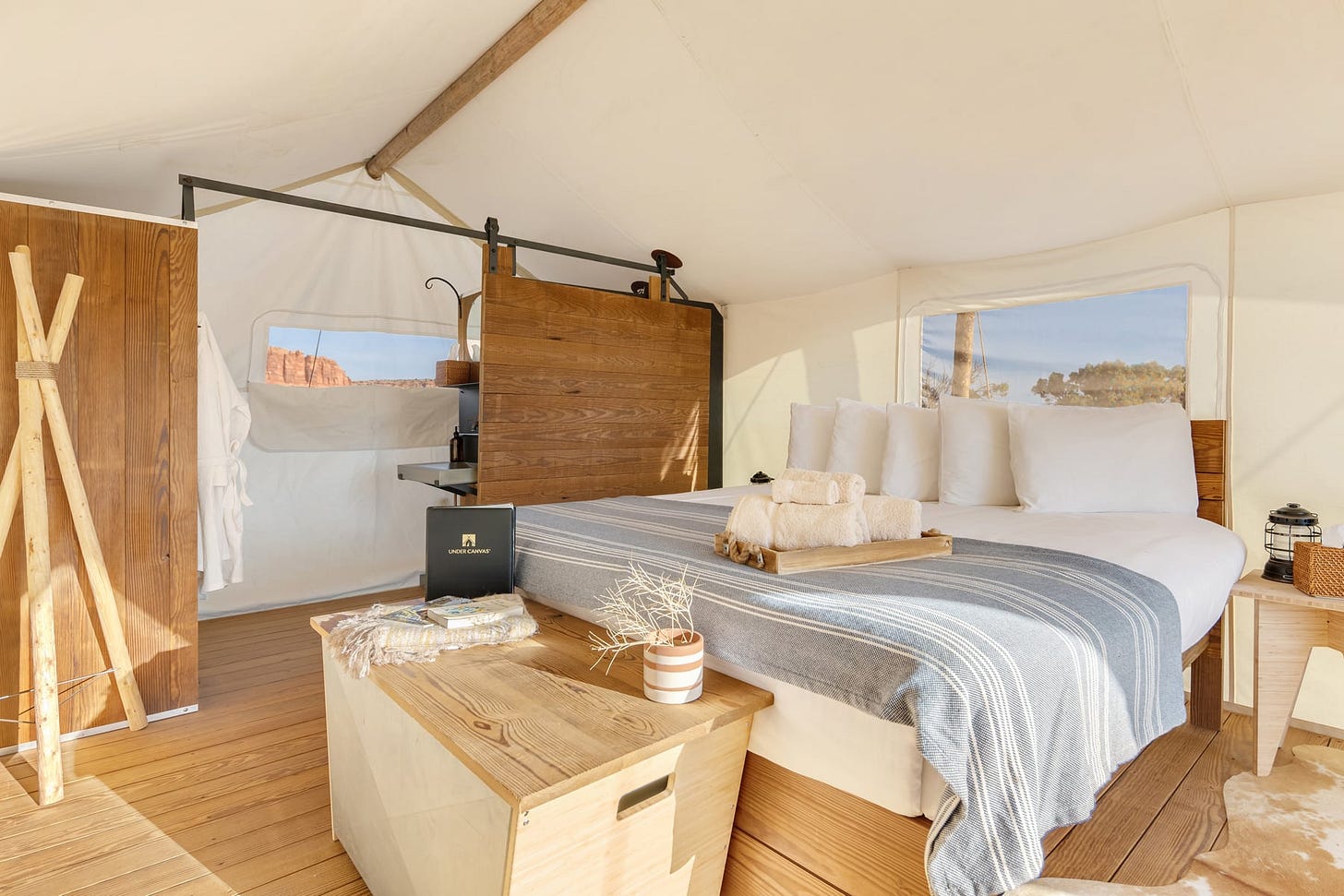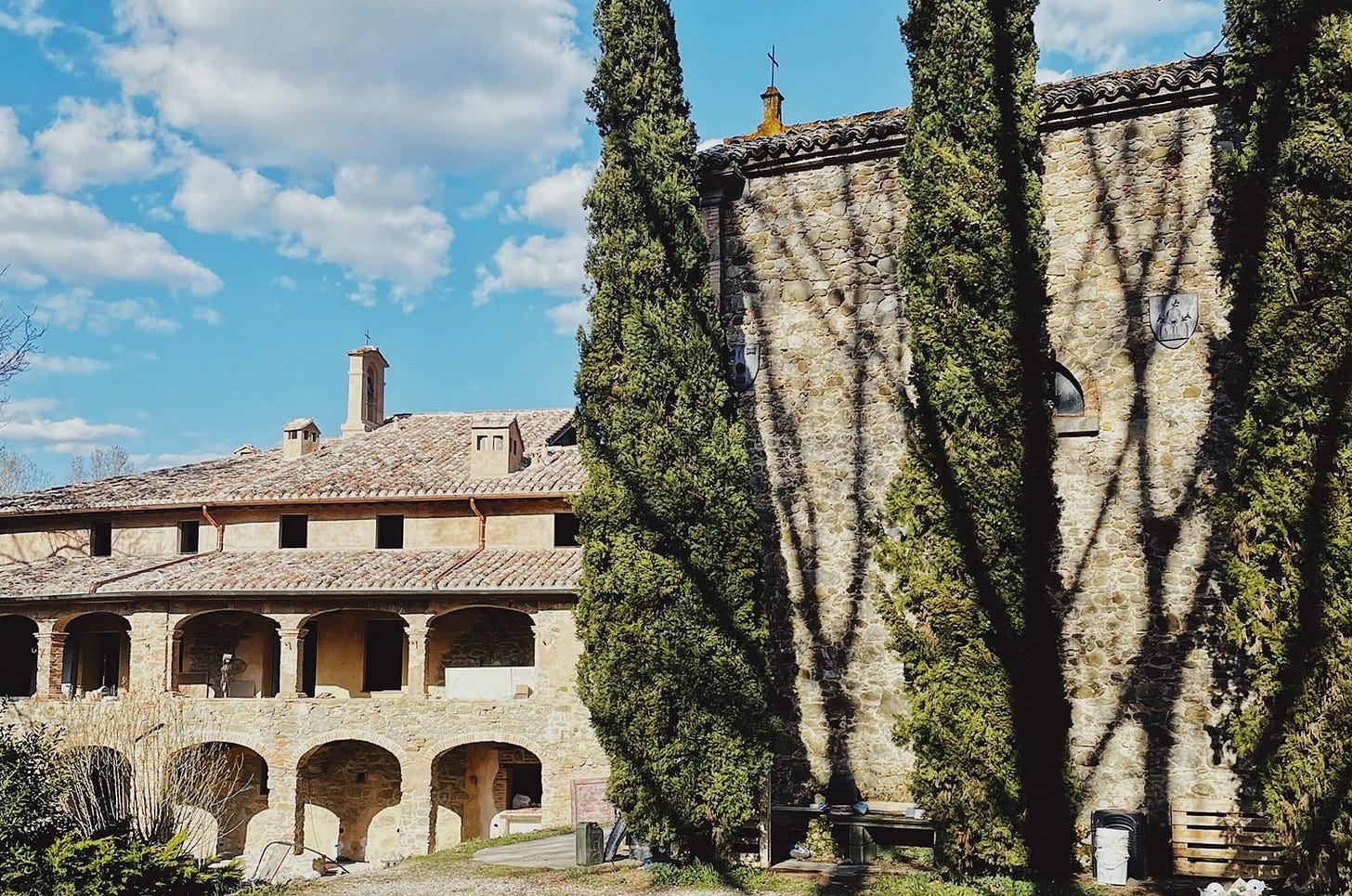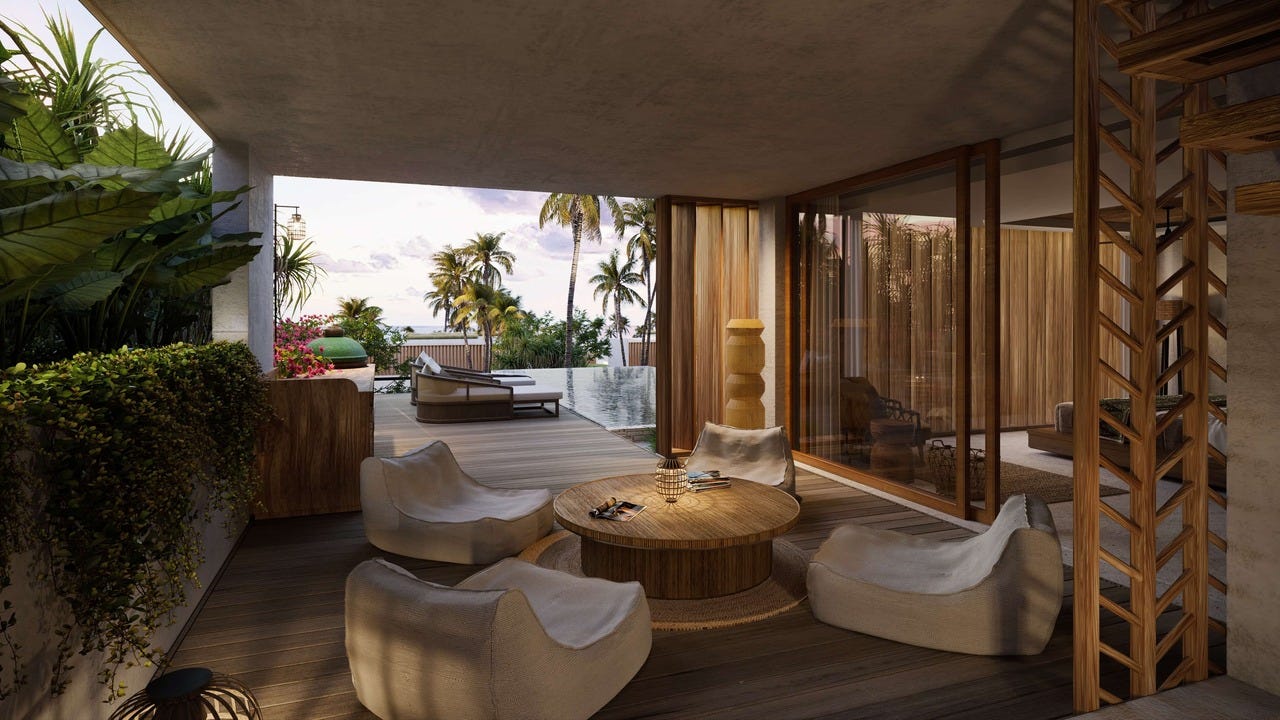I’m coveting these 5 getaways for summer
I’m back in Seattle, fully embedded again in the region’s sublime seascapes, temperate rainforests, and frequent overcast skies. In the Pacific Northwest, I live for my afternoon jaunts through the moss-covered woods near my home. Between magical forest walks, I’ve been researching new hotels with admirable sustainability practices, and came across a handful that got me fantasizing about my next adventure. (Bonus: most of them appear to be opening by summer).
Check them out—and if anyone’s game to share, I’m eager to know which kind of summertime escape below appeals most to fellow travelers.
USA: Glamp your way through national parks
I’ve been watching, enthralled, as Under Canvas has grown its glamping-style collection of retreats since launching in Yellowstone close to a decade ago. I’ve never stayed at one of these camps, but the new Under Canvas Bryce Canyon, which debuts on June 2, seems like a great introduction to the brand, especially since Bryce Canyon National Park is a priority on my travel list.
Located 15 minutes by car from the park—famous for its otherworldly hoodoo rock formations—Under Canvas Bryce Canyon is tucked into a juniper forest on 750 acres where wild elk and antelope roam. The 50 tents, which face Mount Dutton, Adams Head, and Utah’s famous red rocks, are decked out with king-size beds, West Elm furnishings, and wood burning stoves. I appreciate that Under Canvas runs as much energy as possible on solar power and uses other waste reduction measures like low-flow toilets. Overall, Under Canvas uses 87 percent less water and 84 percent less energy than the average hotel.
For a group vacation, I love the sound of the Hoodoo Suite Tent, composed of two tents connected by a private deck. Imagine pairing this place with other Under Canvas camps in the Grand Canyon, Zion, Moab, and Lake Powell-Grand Staircase.
CANADA: Get off the grid with scientists in the Pacific Northwest
It’s probably obvious by now that the temperate rainforests and coastlines of the Pacific Northwest are my happy place. And that’s just one reason why Outer Shores Lodge, located in a remote corner of Vancouver Island, British Columbia, looks like a dream trip to me.
The lodge, which opens May 2022, is located on five acres of evergreen tree-covered land that sits right on the Pacific Ocean. The main lodge, with its enormous stone fireplace and library, has six bedrooms, while two individual cabins sit on a nearby bluff. It looks like a cozy base for exploring intertidal habitats and old growth forests nearby. The area was first settled by the Huu-ay-aht First Nation, and the lodge is collaborating with the self-governing modern treaty Nation on cultural experiences for guests.
But the fun doesn’t stop there: The hotel is part of Outer Shores Expeditions, whose founders are marine ecologists. That makes it easy to pair a lodge stay with a trip to the Haida Gwaii Archipelago and the Great Bear Rainforest on the company’s 70-foot classic wooden schooner, Passing Cloud, whose carbon emissions are offset through a third-party company out of Vancouver.
ITALY: Find your own quiet corner in Umbria
Last month at the DUCO Italy luxury travel summit, I was delighted to learn about Vocabolo Moscatelli, which opens June 2022 in a former 12th century monastery in the Umbrian countryside for guests 14 years and older. I met with Frederik Kubierschky, the co-owner and general manager, and he told me that in a world where singular experiences and sustainability have become bigger priorities for travelers, “smaller is the future of hospitality.” And that’s exactly what he’s going for with this 12-room hotel, which sits on 2.5 private acres in the Umbrian countryside.
Kubierschky tells me that the design at Vocabolo will have a “midcentury feel,” with lots of raw materials like terracotta, wood floors, and stone. The architect behind the design is Jacopo Venerosi Pesciolini, who also worked on the much-adored La Bandita Townhouse in Pienza, Italy. The onsite restaurant’s vegetable-forward menu will reflect the bounty of Umbria’s seasons, from truffles in the winter to wild asparagus in the spring.
Vocabolo Moscatelli also happens to be located five miles away from Castello di Reschio, the beautiful castle retreat that opened with much fanfare in 2021 following a multi-decade restoration. In other words, I now have two magnificent new reasons to return to Umbria .
RWANDA: Check into a thatched hut worthy of a museum
I’ve been following Daniele Kihlgren’s incredible hotel projects for the better part of my career in travel journalism. The Swedish-Italian founder of the Sextantio Group is behind Italy’s singular Le Grotte della Civita, a rustic-chic hotel in southern Italy built out of a series of carefully restored limestone cave dwellings, and the equally unique Santo Stefano di Sessanio, a hotel built out of a once-crumbling medieval town. Both projects have brought economic benefits to the impoverished Abruzzo region. And now, Kihlgren is about to bring this same hospitality ethos to his first hotel outside of Italy, this time in Rwanda.
The Capanne Huts open May 1 on an island in Lake Kivu, Rwanda. The collection of thatched huts, two of which will debut in May, are all built in a similar style to those on display in the Ethnographic Museum of Rwanda in Butare. Like Sextantio’s Italy projects, the idea here is to bring economic benefits to a socially disadvantaged part of the country through tourism. For now, the huts have no room rate; instead, guests pay donations that go directly back into the community.
The huts and the surrounding area, with their deep cultural and agricultural heritages, sound worthy of a trip to Rwanda on their own. But if you’re going all that way, I’d suggest continuing on to Nyungwe National Park for encounters with chimps, baboons, and forest antelopes, going on a once-in-a-lifetime mountain gorilla trek in Volcanoes National Park, seeing the big five at Akagera National Park, or catching the intoxicating vibe of Kigali, one of my favorite cities in East Africa.
INDONESIA: Experience what Bali was like 30 years ago
Now that Indonesia’s quarantine requirement has lifted, the nation’s culture-rich jungles, beaches, and metropolises are open to travelers again. And thanks to the barefoot glamour of Nihi Sumba, the country’s surf haven of Sumba Island has become the untrammeled antidote to nearby Bali. Sumba is twice the size of its more famous, overtouristed neighbor, but sees far fewer visitors per year.
The new Sumba getaway I’m dreaming about is Cap Karoso, whose French owners received permission from the community to build on the pristine beachfront site. Cap Karoso, which is slated to open sometime before the end of 2022, prioritizes sustainability: Materials used in the 47 guest rooms and 20 villas, with their deep soaking tubs, private pools, and hand carved wooden details, come from renewable sources on the island. Restaurants will be supplied by the resort’s onsite farm, which also runs an agricultural school for island residents. About 50 percent of the hotel’s energy will be drawn from solar panels, while most of staff were hired locally.
I fell for Indonesia’s archipelago on a trip to Ubud, Bali, and now I’m eager to capture the essence of quieter Sumba by learning about the Animist Marapu religion, trying my hand at ikat weaving, or exploring the coastline on one of the island’s resident horses.
One last thing before I go:
As parts of Asia reopen, I find myself religiously checking the status of Japan’s entry rules. But experts in this New York Times piece says I shouldn’t hold my breath. The article points out that a high approval rating for pandemic-related travel restrictions within Japan, paired with upcoming July elections, will likely prevent Japan from opening anytime soon. But that doesn’t mean I won’t be fantasizing about checking into Adrian Zecha’s new Azumi Setoda retreat on Ikuchijima Island, riding the new bullet train into Kyushu, or finally taking my next trip to the motherland with my mom.







